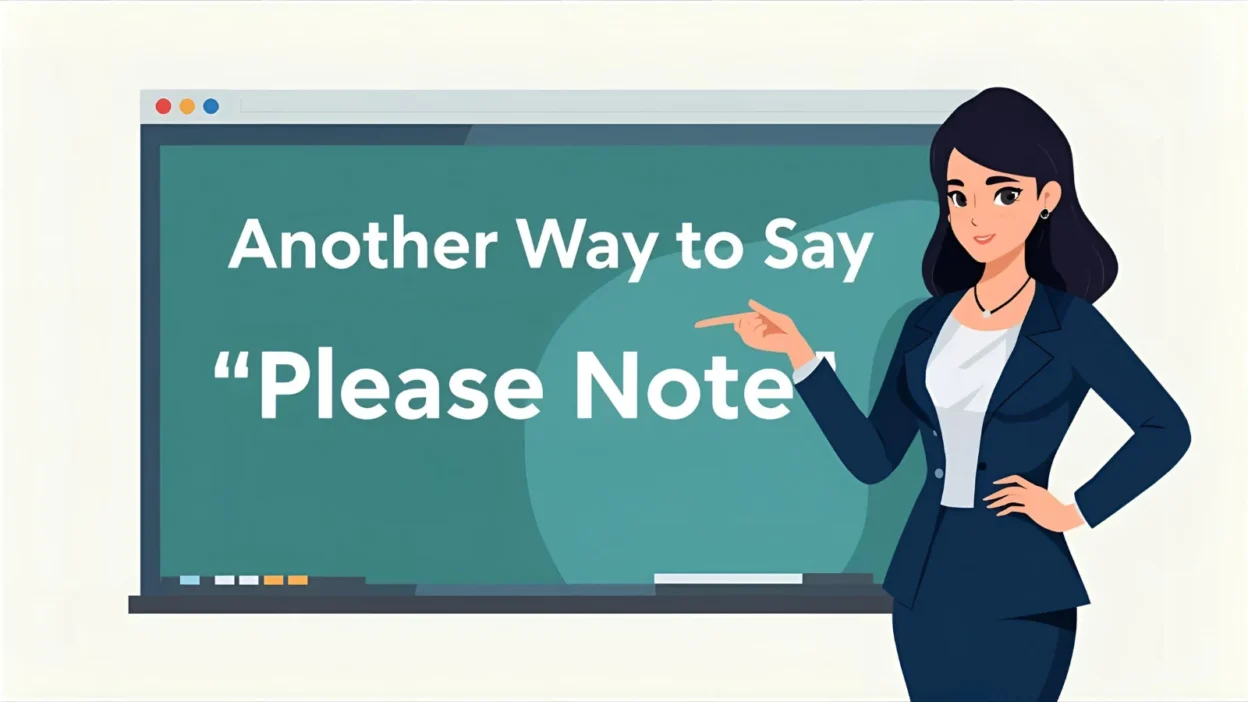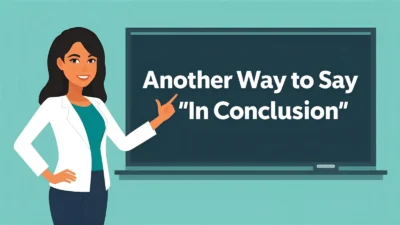The phrase “please note” is often used to draw attention to important information, instructions, or reminders. It’s professional, polite, and clear, which makes it common in emails, reports, and formal communication. However, repeating it too often can sound stiff or overly formal. By using different alternatives, you can vary your tone—whether you want to be more professional, casual, or approachable.
In this article, you’ll find 38 useful alternatives to “please note,” with meanings, explanations, examples, best uses, and tone suggestions.
1. Kindly be advised
Meaning: A polite way to give important information.
Example: “Kindly be advised that the meeting has been rescheduled to 3 PM.”
Best Use: Formal emails, business notices.
Tone: Respectful, professional.
2. Be aware
Meaning: Alerts someone to pay attention.
Example: “Be aware that parking is limited in this area.”
Best Use: Instructions, warnings.
Tone: Neutral, direct.
3. For your information
Meaning: Provides relevant details for awareness.
Example: “For your information, the office will be closed on Monday.”
Best Use: Informative updates.
Tone: Neutral, professional.
4. It is important to note
Meaning: Highlights significance.
Example: “It is important to note that late submissions will not be accepted.”
Best Use: Reports, policies, instructions.
Tone: Formal, serious.
5. Please be aware
Meaning: Courteously reminds someone of something.
Example: “Please be aware that delays are possible due to weather conditions.”
Best Use: Emails, announcements.
Tone: Polite, professional.
6. Take into consideration
Meaning: Suggests keeping information in mind.
Example: “Take into consideration that the data is still preliminary.”
Best Use: Reports, decision-making contexts.
Tone: Neutral, thoughtful.
7. Keep in mind
Meaning: Friendly reminder to remember something.
Example: “Keep in mind that the application deadline is next Friday.”
Best Use: Casual or semi-formal communication.
Tone: Friendly, approachable.
8. Important to remember
Meaning: Stresses significance.
Example: “It’s important to remember that fees are non-refundable.”
Best Use: Rules, instructions, reminders.
Tone: Formal, serious.
9. Just a reminder
Meaning: Light, gentle reminder.
Example: “Just a reminder: the training session begins at 10 AM.”
Best Use: Casual or semi-formal notes.
Tone: Polite, friendly.
10. Kindly note
Meaning: Polite and professional.
Example: “Kindly note that your appointment is scheduled for September 20.”
Best Use: Emails, formal notices.
Tone: Respectful, professional.
11. Worth mentioning
Meaning: Highlights an extra but relevant detail.
Example: “It’s worth mentioning that this discount applies only to new customers.”
Best Use: Conversations, informal writing.
Tone: Friendly, neutral.
12. Pay attention to
Meaning: Directs focus.
Example: “Pay attention to the highlighted section in the contract.”
Best Use: Instructions, teaching.
Tone: Neutral, instructional.
13. Please be reminded
Meaning: Courteous way to repeat important info.
Example: “Please be reminded that ID cards must be worn at all times.”
Best Use: Notices, workplace rules.
Tone: Polite, professional.
14. Note that
Meaning: Short and direct alternative.
Example: “Note that all submissions must be in PDF format.”
Best Use: Reports, instructions.
Tone: Formal, concise.
15. Don’t forget
Meaning: Friendly reminder.
Example: “Don’t forget to submit your timesheet today.”
Best Use: Casual communication, team reminders.
Tone: Informal, approachable.
16. May I draw your attention to
Meaning: Polite and formal way to highlight something.
Example: “May I draw your attention to section 4 of the agreement.”
Best Use: Legal, professional writing.
Tone: Formal, respectful.
17. Should be noted
Meaning: Stresses importance objectively.
Example: “It should be noted that results may vary across regions.”
Best Use: Academic, analytical writing.
Tone: Neutral, formal.
18. Bear in mind
Meaning: Suggests remembering something relevant.
Example: “Bear in mind that prices may change during the holiday season.”
Best Use: Semi-formal contexts, advice.
Tone: Neutral, conversational.
19. I’d like to point out
Meaning: Directs attention politely.
Example: “I’d like to point out that this feature is still in beta testing.”
Best Use: Meetings, emails.
Tone: Friendly, professional.
20. Let it be known
Meaning: Strong emphasis on an important fact.
Example: “Let it be known that the deadline will not be extended.”
Best Use: Formal statements, firm reminders.
Tone: Serious, authoritative.
21. Please be advised
Meaning: Polite and formal way to notify.
Example: “Please be advised that the policy has been updated.”
Best Use: Official notices, emails.
Tone: Formal, courteous.
22. I want to highlight
Meaning: Brings attention to something important.
Example: “I want to highlight the key points from today’s meeting.”
Best Use: Presentations, reports.
Tone: Neutral, professional.
23. Let me remind you
Meaning: Gentle way of repeating important information.
Example: “Let me remind you that all expenses must be submitted by Friday.”
Best Use: Team reminders, casual or semi-formal writing.
Tone: Friendly, polite.
24. It must be stressed
Meaning: Emphasizes something strongly.
Example: “It must be stressed that safety regulations are mandatory.”
Best Use: Formal reports, rules, academic writing.
Tone: Serious, formal.
25. I’d like to emphasize
Meaning: Highlights something of priority.
Example: “I’d like to emphasize that feedback is due by Monday.”
Best Use: Professional communication, speeches.
Tone: Polite, professional.
Conclusion
The phrase “please note” is widely used in professional and academic contexts, but you have plenty of alternatives to vary tone and style. Use formal options like “please be advised,” “it should be noted,” or “kindly note” in professional settings, and casual alternatives like “just a reminder,” “keep in mind,” or “don’t forget” in friendlier or team-related communication. Choosing the right expression ensures your message is clear, polite, and well-suited to the context.



